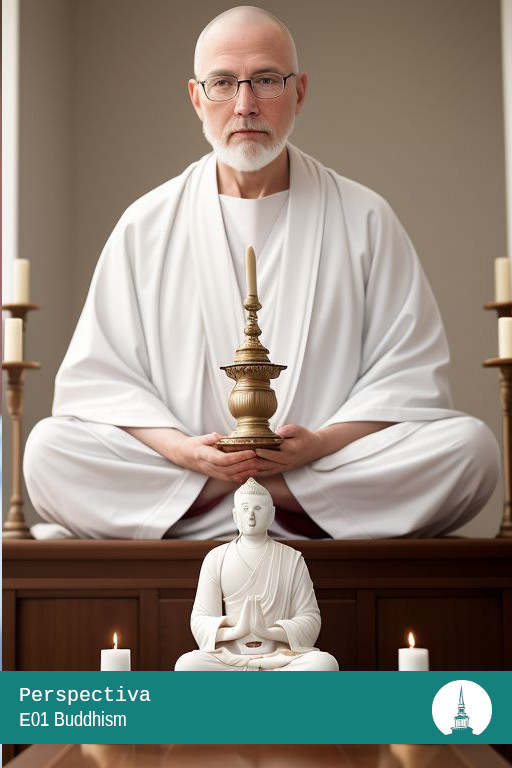The Growth of the American Buddhist Lifeway:
E01 Buddhism
Non-theistic spiritual tradition founded by Buddha, emphasizes mindfulness, compassion, and the pursuit of enlightenment to end suffering.
Buddhism in the United States represents a diverse and growing religious movement with a diverse range of traditions, lineages, and practices. Its history in the country dates back to the mid-19th century, but it gained more widespread recognition and adherents during the 20th and 21st centuries.

Traveler and Immigrant Popularizers
One of the earliest introductions of Buddhism to the United States was through the efforts of individual pioneers and scholars who encountered the teachings of the Buddha in Asia and brought them back to American shores. Notable figures like Henry David Thoreau and D.T. Suzuki played pivotal roles in popularizing Buddhist ideas and concepts. As a result, early Buddhist communities began to form, often led by immigrant populations, particularly Chinese and Japanese immigrants.
Wide Range of Buddhist Traditions
Over time, Buddhism in the United States has expanded to include a wide range of traditions and lineages. These include Theravada, Zen, Tibetan Buddhism, Pure Land, and various forms of American Buddhism. Each tradition offers unique teachings, practices, and approaches to mindfulness and enlightenment.
20th Century Rise of American Buddhism
The 20th century witnessed a surge in interest in Buddhism, with the Beat Generation writers like Jack Kerouac and Allen Ginsberg drawing inspiration from Eastern spirituality. The countercultural movements of the 1960s and 1970s also contributed to the popularization of Buddhism, with figures like Ram Dass and Chögyam Trungpa Rinpoche gaining prominence. Buddhist centers, temples, and meditation groups have proliferated across the United States, providing places for both immigrants and non-immigrants to study and practice Buddhism. Many of these centers emphasize meditation as a core practice, promoting mindfulness, stress reduction, and spiritual growth.
Western Buddhism Adaptations
The American landscape of Buddhism is marked by its adaptability and syncretism. While traditional Asian forms of Buddhism are practiced, American Buddhism often incorporates elements of Western psychology, science, and philosophy. This hybrid approach reflects the adaptability of Buddhism to the American context.
Summary
In summary, Buddhism in the United States is a multifaceted and dynamic religious movement with a history that spans over a century. It encompasses a wide array of traditions and practices, reflecting the diversity of American society and the adaptability of Buddhist teachings to different cultural contexts. With a growing number of practitioners and an increasing influence on American culture, Buddhism continues to shape the spiritual landscape of the United States.

| TOP TEN BASIC TRADE AREAS | |
| 1 | Los Angeles, CA |
| 2 | San Francisco-Oakland-San Jose, CA |
| 3 | New York, NY |
| 4 | Seattle-Tacoma, WA |
| 5 | Honolulu, HI |
| 6 | Chicago, IL |
| 7 | Washington, DC |
| 8 | Philadelphia, PA-Wilmington, DE-Trenton, NJ |
| 9 | San Diego, CA |
| 10 | Boston, MA |
